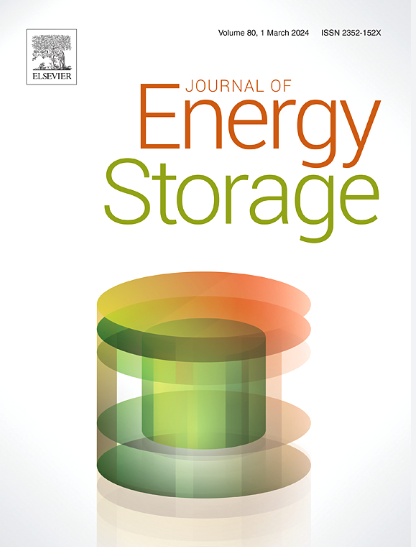SOH-KLSTM: A hybrid Kolmogorov-Arnold Network and LSTM model for enhanced Lithium-ion battery Health Monitoring
IF 8.9
2区 工程技术
Q1 ENERGY & FUELS
引用次数: 0
Abstract
Accurate and reliable State Of Health (SOH) estimation for Lithium (Li) batteries is critical to ensure the longevity, safety, and optimal performance of applications like electric vehicles, unmanned aerial vehicles, consumer electronics, and renewable energy storage systems. Conventional SOH estimation techniques fail to represent the non-linear and temporal aspects of battery degradation effectively. In this study, we propose a novel SOH prediction framework (SOH-KLSTM) using Kolmogorov-Arnold Network (KAN)-Integrated Candidate Cell State in LSTM for Li batteries Health Monitoring. This hybrid approach combines the ability of LSTM to learn long-term dependencies for accurate time series predictions with KAN’s non-linear approximation capabilities to effectively capture complex degradation behaviors in Lithium batteries. KAN addresses LSTM’s limitations in handling non-smooth approximations and memory decay over extended sequences. The combination of LSTM and KAN ensures that the model accurately depicts both the time-dependent changes and the complicated non-linearities of battery degradation. Experimental validation was performed on several subsets from the NASA Prognostics Center of Excellence (PCoE) dataset, which includes Li-ion battery data collected during hundreds of charge–discharge cycles under various operating conditions. The proposed model achieved a Root Mean Square Error (RMSE) of 0.001682 in the NASA B0005 subset, significantly outperforming the LSTM-only model, which achieved an RMSE of 0.058334. This corresponds to a 97.12% reduction in prediction error, reflecting the superior predictive performance of our proposed model, with an accuracy approximately 35 times greater than that of the LSTM model alone. The results of additional NASA PCoE subsets further highlight the superior performance and computational efficiency of the model, positioning it as a promising solution for real-time battery health monitoring and management systems.
SOH-KLSTM:用于增强型锂离子电池健康监测的柯尔莫哥洛夫-阿诺德网络和 LSTM 混合模型
准确可靠的锂电池健康状态(SOH)评估对于确保电动汽车、无人机、消费电子产品和可再生能源存储系统等应用的寿命、安全性和最佳性能至关重要。传统的SOH估计技术不能有效地表示电池退化的非线性和时间方面。在这项研究中,我们提出了一个新的SOH预测框架(SOH- klstm),该框架使用Kolmogorov-Arnold网络(KAN)-集成候选电池状态在LSTM中用于锂电池健康监测。这种混合方法将LSTM学习长期依赖关系的能力与KAN的非线性近似能力相结合,以准确地预测时间序列,从而有效地捕获锂电池中的复杂退化行为。KAN解决了LSTM在处理非光滑近似和扩展序列上的内存衰减方面的局限性。LSTM和KAN的结合保证了该模型既能准确地描述电池退化的时变变化,又能准确地描述电池退化的复杂非线性。实验验证是在NASA卓越预测中心(PCoE)数据集的几个子集上进行的,其中包括在各种操作条件下数百次充放电循环中收集的锂离子电池数据。该模型在NASA B0005子集上的均方根误差(RMSE)为0.001682,显著优于纯lstm模型的均方根误差(RMSE)为0.058334。这相当于预测误差降低了97.12%,反映了我们提出的模型的优越预测性能,其精度约为单独LSTM模型的35倍。其他NASA PCoE子集的结果进一步突出了该模型的卓越性能和计算效率,将其定位为实时电池健康监测和管理系统的有前途的解决方案。
本文章由计算机程序翻译,如有差异,请以英文原文为准。
求助全文
约1分钟内获得全文
求助全文
来源期刊

Journal of energy storage
Energy-Renewable Energy, Sustainability and the Environment
CiteScore
11.80
自引率
24.50%
发文量
2262
审稿时长
69 days
期刊介绍:
Journal of energy storage focusses on all aspects of energy storage, in particular systems integration, electric grid integration, modelling and analysis, novel energy storage technologies, sizing and management strategies, business models for operation of storage systems and energy storage developments worldwide.
 求助内容:
求助内容: 应助结果提醒方式:
应助结果提醒方式:


